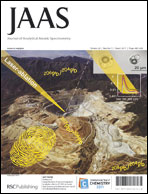Radionuclide speciation: A key point in the field of nuclear toxicology studies†
Abstract
The understanding of radionuclides (RN) action modes in the living organisms in case of contamination is a major aim in nuclear toxicology studies. The mechanisms of RN-involved toxicity at the molecular level are critically dependent on their speciation. In this framework, the calculating and experimental approaches of speciation determination are described in the first part of this paper. The selection of cobalt, uranium and plutonium as relevant examples of chemical and/or radiotoxic contaminants at diverse levels is further explained. The results regarding their speciation and interactions in various biological media, going from simple biorelevant systems to in vitro and in vivo systems are reported. An interdisciplinary approach, combining i) in silico studies, providing precise aspects of structural insights into protein-RN interactions, ii) in analytico studies, addressing fundamental speciation and structural studies and developments in biorelevant RN-ligands systems, iii) in vitro studies, concerning RN speciation and interactions in cellular systems and iv) in vivo studies describing the RN fate and behavior in part or whole organisms, has been undertaken to explore the results. In each case, the importance of the speciation knowledge is emphasized, in order to shed light on the understanding of RN impact and action modes at the molecular level.


 Please wait while we load your content...
Please wait while we load your content...